-
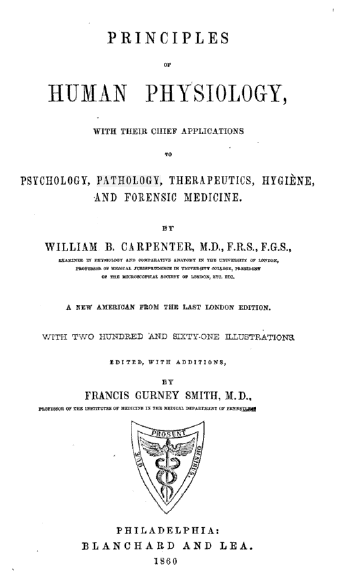
-
- page 115-116
-
- 104. It may not improbably be in this
manner, that a number of those so-called
"spiritual" phenomena are produced, in which
"subjective" Sensations of various kinds are
distinctly felt by 'persons who are not only
wide awake, but are entirely ttustworthy on all
other matters, though self-deceived as to the
reality of the objective sources of their
sensation. Having resigned the exercise of their
Common Sense quoad this particular set of
beliefs, and having allowed them to gain a
mastery over their ordinary course of thought,
there is nothing wonderful in the automatic and
unconscious evolution of results corresponding
to these beliefs ; which results, impressing
themselves on the Sensorium, are felt as true
sensations. And just as Sir John ilersôhel
truly saw as geometrical forms the unconscious
constructions of his own Cerebrum, so, it seems
probable, may the "spiritualist" truly see the
strange things he describes as actual
occurrences, although they have no foundation
whatever in fact ( 147).
-
- 105 Another consideration which strongly
indicates that the action of Cerebral changes on
the Muscular apparatus is exerted through the
instrumentality of the Sensorial apparatus, is
the identity of the effects often produced by
ideas, with those produced by sights, sounds, or
other Sensations which call forth respondent
motions. Thus in a person predisposed to
yawn, the verbal suggestion of the notion
of yawning is almost as provocative of
the act, as the sight or sound of a yawn
in another. So, again, a "ticklish" person is
affected in the same way by the mental state
suggested by the pointing of a finger., as by
the actual contact. And so in a hydrophobic
patient, the same paroxysm is excited by the
idea of water suggested by words or 'pictures,
as by the actual sight or sound of it. So far,
then, from being a source of additional
complexity, the doctrine of the singleness of
the Sensorial nerve-centre, through the
instrumentality of which we, become conscious
alike of Sense-impressions and. of Cerebral
changes, and from which the Motorimpulses to
respondent action immédiately proceed,
will be found (the writer believes) to lead a
real simplification in the interpretation of a
large class of phenomena occupying the border
ground between physical and psychical
action.
-
- 106 That the different portions of the
Cerebrum should have different parts to perform
in that wonderful series of operations by which
the Brain as a whole becomes the instrument of
the Mind, can scarcely be regarded as in itself
improbable. But ro determination of this kind
can have the least scientific value, that is not
based on the facts of Comparative Anatomy and
Embryonic Development. In ascending the
Vertebrate series, we find that this organ not
only increases in relative size, and becomes
more complex in general structure, but undergoes
progressive additions which can be definea with
considerable precision. For the Cerebrum of
Oviparous Vertebrata is not a miniature
representative of the entire Cerebrum of Man,
but corresponds only with its "anterior lobe;"
and is entirely deficient in that great
transverse commissure, the corpus callosum (
89), the first appearance of which, in the
Placental Mammals, constitutes "the greatest and
most sudden modification exhibited by the brain
in the whole Vertebrated series" (Huxley). It is
among the smooth-brained Rodentia that we meet
with the first distinct indication of a "middle
lobe," marked off from the anterior by the
"fissure of Sylvius;" this lobe attains a
considèrably greater development in the
Carn'ivora; but even in the Lemurs it still
forms the hindermost portion of the Cerebrum.
The "posterior lobe" makes its first appearance
in Monkeys; and is distinctly present in the
anthropoid Apes. The evolution of the Human
Cerebrum follows the same course. For in the
first phase of its development which presents
itself during the second and third months, there
is no indication of any but the anterior lobes ;
in the second, which lasts from the latter part
of the third month to the beginning of the
fifth, the middle lobes make their appearance ;
and it is not until the latter.........
-
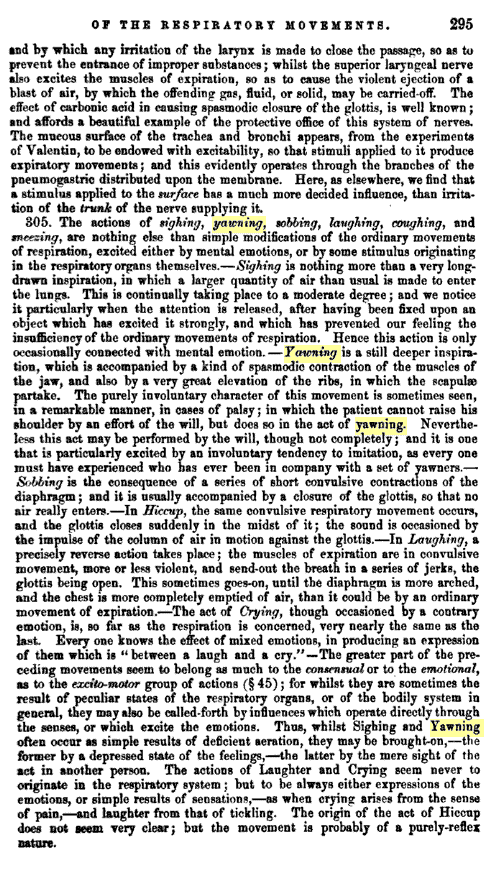 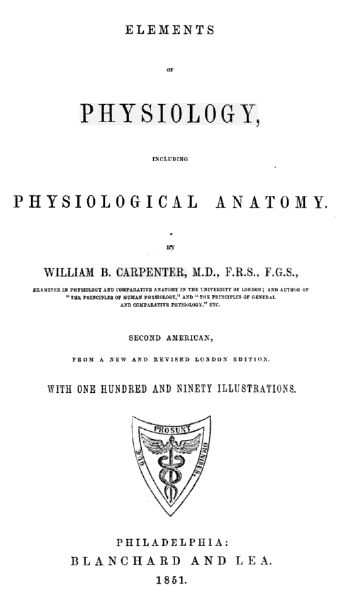 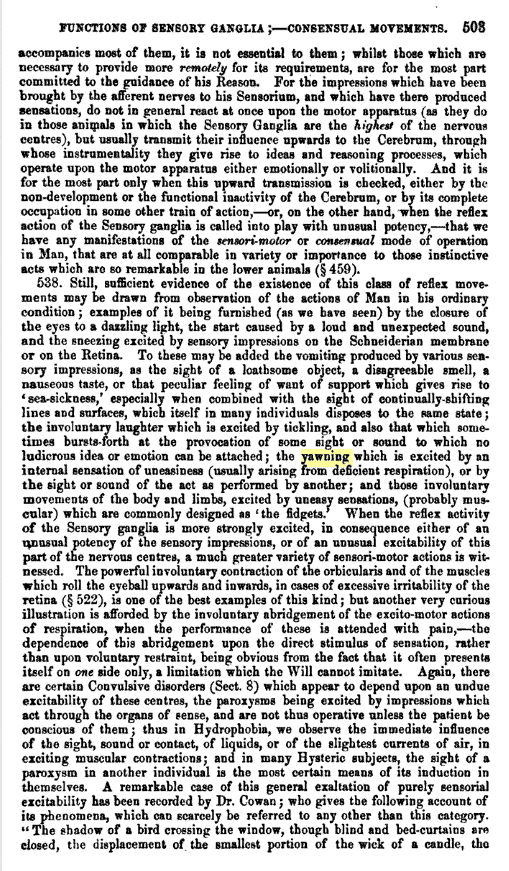 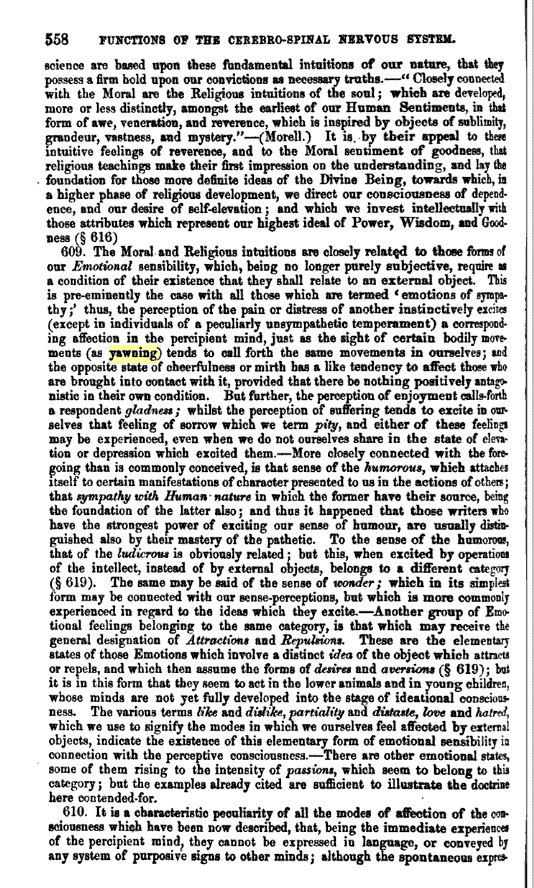 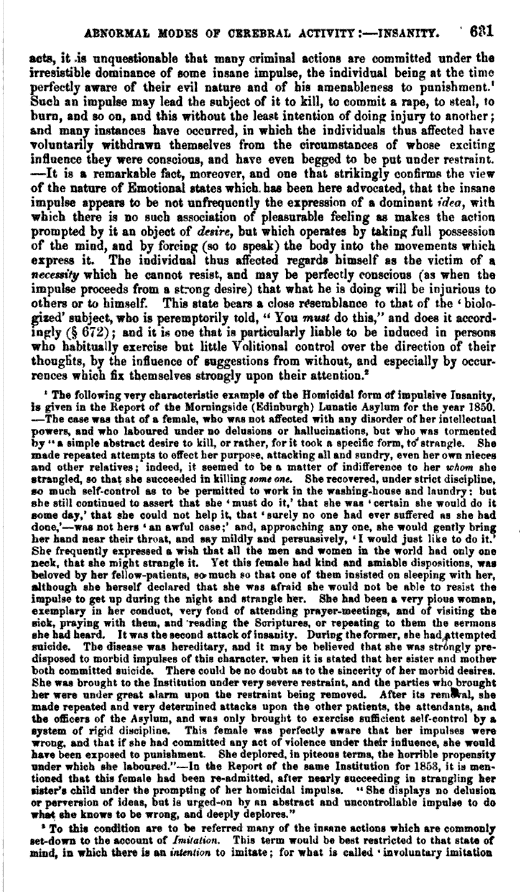 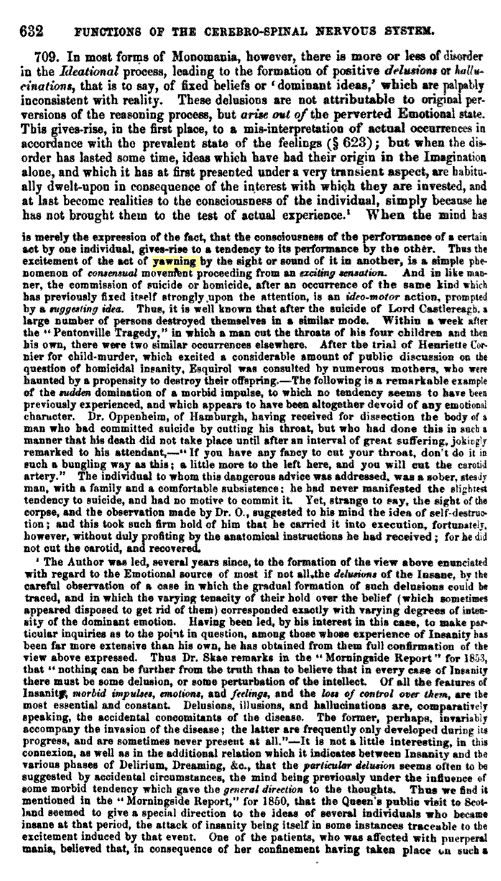 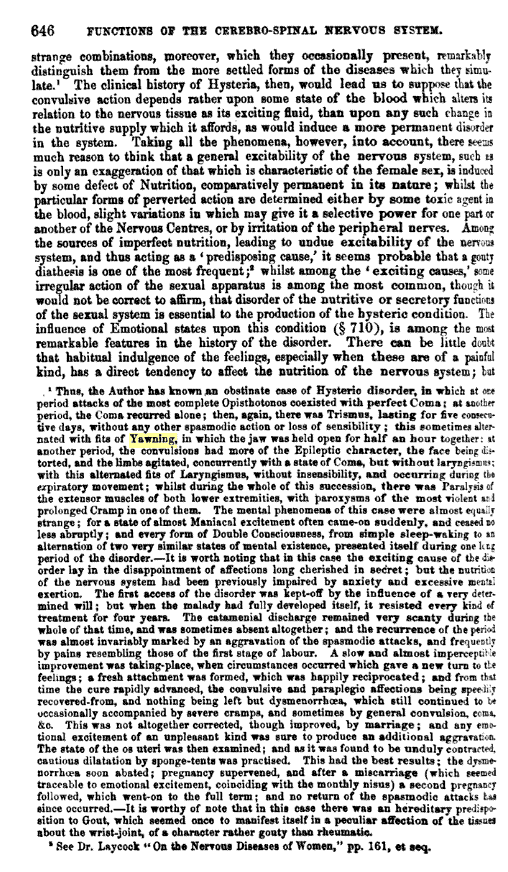
|








